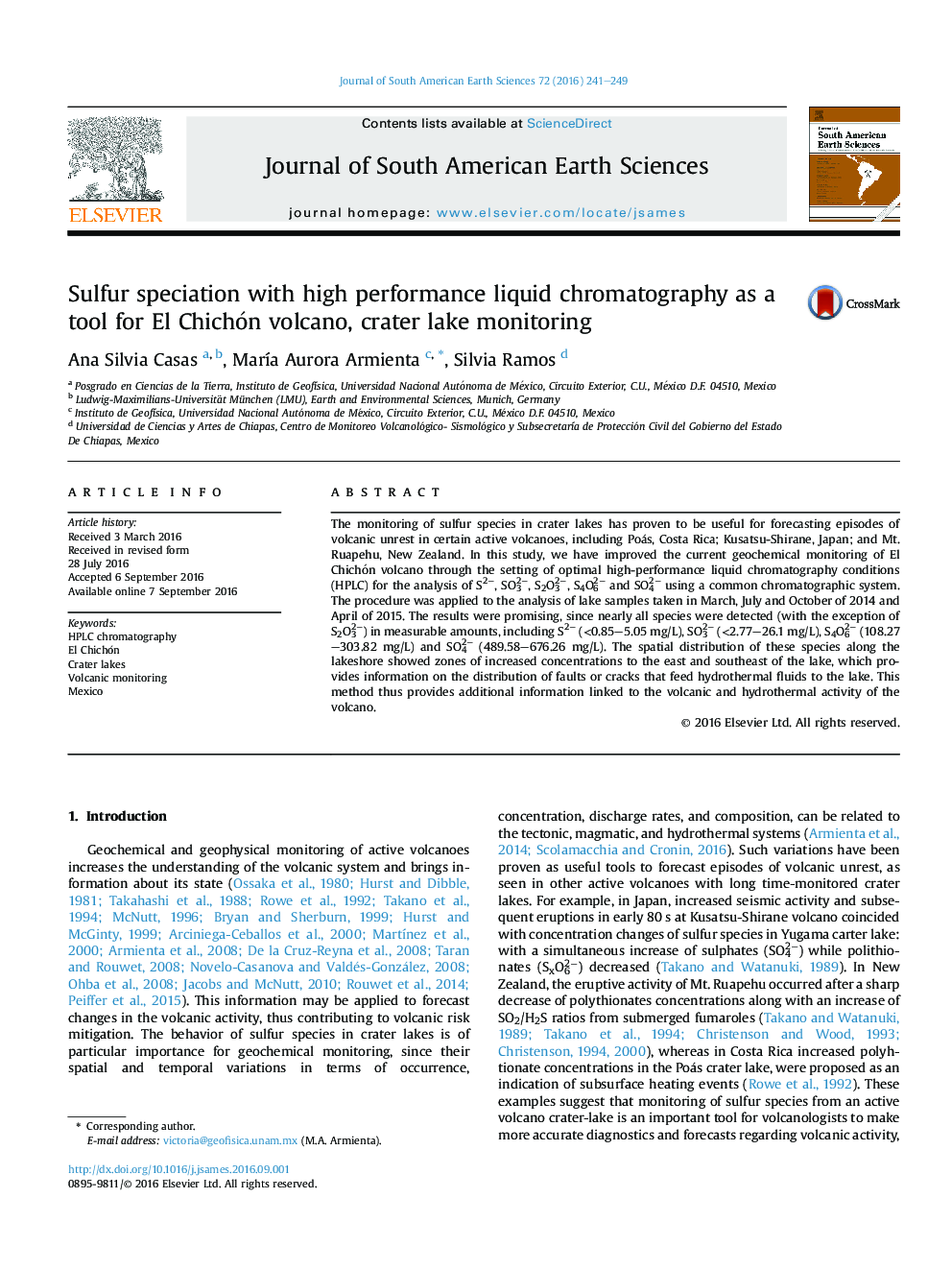| Article ID | Journal | Published Year | Pages | File Type |
|---|---|---|---|---|
| 4681964 | Journal of South American Earth Sciences | 2016 | 9 Pages |
•HPLC sulfur speciation analysis was developed for El Chichón volcano monitoring.•SO32− and S4O62− were detected for the first time in the crater-lake water.•Occurrence of sulfur species is influenced by structural features.
The monitoring of sulfur species in crater lakes has proven to be useful for forecasting episodes of volcanic unrest in certain active volcanoes, including Poás, Costa Rica; Kusatsu-Shirane, Japan; and Mt. Ruapehu, New Zealand. In this study, we have improved the current geochemical monitoring of El Chichón volcano through the setting of optimal high-performance liquid chromatography conditions (HPLC) for the analysis of S2−, SO32−, S2O32−, S4O62− and SO42− using a common chromatographic system. The procedure was applied to the analysis of lake samples taken in March, July and October of 2014 and April of 2015. The results were promising, since nearly all species were detected (with the exception of S2O32−) in measurable amounts, including S2− (<0.85–5.05 mg/L), SO32− (<2.77–26.1 mg/L), S4O62− (108.27–303.82 mg/L) and SO42− (489.58–676.26 mg/L). The spatial distribution of these species along the lakeshore showed zones of increased concentrations to the east and southeast of the lake, which provides information on the distribution of faults or cracks that feed hydrothermal fluids to the lake. This method thus provides additional information linked to the volcanic and hydrothermal activity of the volcano.
